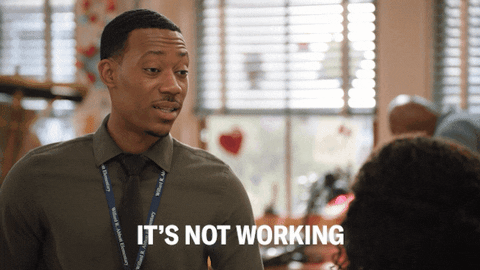01 November 2023 | People and Culture
What to do when things aren’t working…
By

Leaders of the world!
I appreciate you being here. It’s incredible thinking that I’ve been writing this Newsletter for over a year. (I used to write two newsletters each week, smh.)
Today, we’re diving deep into something that will be a game-changer for any leader aiming to build a cohesive team—Patrick Lincioni’’s Five Dysfunctions of a Team.
This is the leadership book I recommend more than any other. Understanding these dysfunctions is like having a roadmap to effective conflict management.
What happens when your team can’t figure out how to work together?
- Destructive conflict behaviors
- Ineffective conflict management
- Withholding feedback and errors
- Reduced innovation and productivity
It’s like a freaking hangover that never goes away.
But my Leader’s Lens family, there is a better way. The 5 Dysfunctions of a team is like a treasure map once you learn to decode it. Let’s break down these dysfunctions and give you guidance on how to work through each.
Are. You. READY!!?
(Good news! You can listen to me break down this book in detail on this week’s podcast. It’s lit.)
What are the 5 Dysfunctions of a Team?
Leading a team can be freaking hard sometimes.
These dysfunctions will hold back even experienced teams with the most well intentioned leaders. But you will know what to look for.
First up, we have Absence of Trust. Imagine a team where everyone’s wearing a mask. No one’s authentic. Everyone is afraid to be transparent. It’s a nightmare.
Trust is the foundation of a high-performing team.
Next, we have Fear of Conflict. Remember, your goal is not to avoid conflict, it’s to help your team understand how to navigate it effectively. Building a team who is not afraid of conflict doesn’t mean a team who is yelling at each other all the team.
A team that doesn’t fear conflict is more likely to engage in constructive debates where ideas are challenged and fortified through thoughtful dialogue. (Note from the author: “Fortified through thoughtful dialogue” is 🔥🔥🔥)
Then we have to overcome a Lack of Commitment. If your team members are not buying into the decisions made, you’re setting yourself up for failure. If your team nods your head, and then forgets everything you said, they will not succeed.
Commitment is about active participation and collective responsibility.
Fourth, we have Avoidance of Accountability. Remember that book ‘Radical Candor’? It teaches us that accountability is not just about calling out mistakes; it’s about fostering a culture where everyone feels responsible for the team’s success.
Be quick with coaching conversations. You can’t let doing a good job and a bad job feel the same.
And finally, Inattention to Results. Developing a team who is more invested in the success of the team than their individual success is the “Here” Drake talks about.
At the bottom, individual agendas take precedence over collective goals. But whenever on your team sees the value of being there for each other, amazing things are possible.
🕶 A raised tide lifts all ships.
But what do you do?
Now that you understand the 5 Dysfunctions of a Team, the next step is learning what to do with the knowledge. This is the good stuff, so I appreciate you sticking around for it.
Absence of Trust. You can’t build a house on a shaky foundation, right? Trust is your bedrock. Create an environment where vulnerability isn’t a taboo. Use team-building exercises, one-on-ones, and open forums to break down those walls. And most importantly, always do what you say you will do.
Fear of Conflict. Conflict isn’t your enemy; it’s the pathway to innovation. Encourage constructive debates. When people share their concerns or bring up problems, never get defensive or put the blame on them. Your goal isn’t to be right, it is to find the best solution available.
Lack of Commitment. Start with WHY. Getting everyone on board with a decision is not easy. But to do it well, you need them to understand the impact of their commitment. You do this with transparency. Always share the ‘why’ behind decisions.
Avoidance of Accountability. Accountability isn’t about blame; it’s about responsibility. Create a culture where feedback is the expectation.
Inattention to Results. Keep your eyes on the prize, team! Align individual goals with team objectives. Celebrate collective wins and learn from the losses.
In Conclusion
We’ve dissected the 5 Dysfunctions of a Team, and you’ve got the tools to build a cohesive team, foster commitment, and instill accountability. These are the building blocks of transformative leadership.
Remember, a smooth sea never made a skilled sailor. Oops, my bad, no sailing analogies.
As we wrap up, let’s not forget the power of emotional agility. It’s your secret sauce in navigating the complexities of human behavior. And hey, if you haven’t read ‘Radical Candor’ yet, consider this your nudge.
Thank you for being a part of this enlightening journey. You’re not just a leader; you’re a catalyst for change, a beacon of resilience. Go forth and make waves—positive ones, of course!